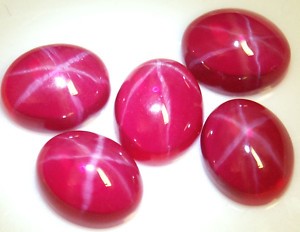Introduction
For thousands of years, man has fashioned uncut gem specimens into faceted and cabochon shapes. In addition to gemstone cutting and polishing, over the centuries we have developed countless other methods to improve upon the natural properties of gemstones. These techniques are known as enhancements.
Enhancement is defined as any process (other than cutting and polishing) which improves the appearance or the durability of a gem. Many gemstones are altered to enhance their appearance. This may be done to produce colours not usually found in nature, to improve colour, to improve clarity, to reduce porosity and stabilize colour (by preventing absorption of discoloring oils and other substances), or to enhance durability.
Gemstones are treated in different ways to enhance their appearance. Some of these procedures are centuries old, while others are relatively new. The methods of enhancement vary within each variety. Depending on the stone and the treatment, such alteration may be easy or impossible to detect. It is unethical and unlawful to sell any artificially enhanced gems without full disclosure of information about the treatment. Value of some gem varieties can be enhanced by applying one or more treatments.
Heat treatment
The most versatile and widely used treatment for gems is heating. Depending on the gem and the desired effect, temperatures used vary from those provided by placing the gems in direct intense sunlight, to near melting point temperatures, periods of heating range from minutes to several days, and oxygen may be present or excluded from the heating atmosphere.
It can only be guessed when the enhancement of gemstones by heat treatment first evolved. Treatments were in full use in Greece and Rome well before the Christian era. There were a number of early technological studies on the effect on gems of heating in various atmospheres and at various temperatures. Since the 1970s there has been a tremendous increase in the use of heat treatments, particularly as applied to the ruby and sapphire (corundum) mineral family, including Geuda.
Heat-treatment conditions
The important factors in specifying the conditions for the heat treatment of a gemstone material are the following:
- The maximum temperature reached.
- The time for which the maximum temperature is sustained.
- The rate of heating to temperature.
- The rate of cooling down from temperature and any holding stages while cooling.
- The chemical nature of the atmosphere.
- The pressure of the atmosphere.
- The nature of the material in contact with the gemstone.
These seven factors may even vary during the course of a specific heat treatment. In any given treatment several of these may not be important.
Exact conditions for heat treatments cannot usually be specified for two reasons: first, because most heat-treatment processes are held as closely guarded secrets and have never been fully revealed; and, second, and most important reason is the wide variability of natural materials.
Corundum
Ruby and sapphire belongs to the corundum mineral family. Corundum is a single crystal of alumina. In its purest form corundum is colourless. When corundum contains one or more chromophoric elements such as Iron (Fe), Titanium (Ti) and Chromium (Cr), in trace amounts as impurities, different colours are produced.
Chromium by itself gives a pink to deep red ruby colour. Iron, when present by itself, can give to corundum a pale green, yellow or brownish colour, but in the presence of titanium also produce a wide range of greens, blue-greens and blues, that originate in a charge transfer mechanism involving both ions. Titanium itself can lead to asterism and to silk. Other colours can be produced by vanadium, nickel and cobalt, but these are not normally involved in gemstone enhancement. And also, if there are colour centers that can be produced yellow colour.
According to the new classification for mineral corundum by M.S. Rupasinghe et al in 1993, corundum can be classified into 3 main varieties such as,
Major heat treatment processes used for ruby and sapphires
Process No. 1
Process No. 2
Process No. 3
Process No. 4
Process No. 5
Process No. 6
Process No. 7
Process No. 8
Geuda
Geuda consists of semi-transparent to semi-translucent, whitish or bluish or semi-brownish milky or silky corundum with the characteristic “Diesel effect” in transmitted light. The milky or silky appearance of geuda stone is caused by the presence of titanium dioxide (TiO2) as fine sub-microscopic particles which produce a semi-transparency in stones. Presence of iron oxide (Fe2O3) impurities give the diesel effect, which is best observed in transmitted light.
At temperatures above about 1600 ℃ rutile (TiO2) is soluble in Al2O3 in the form of what is usually called a solid solution.
It is generally believed that under reducing conditions in the heat treating process, iron in the ferric-state gets reduce to the ferrous state.
Then Ti4+ ions remain in solid solution will interact with Fe2+ and produce the blue colour.
Heat Treatment Process
In heat-treating different kinds of geuda, the atmospheric conditions inside the furnace should be controlled to develop the different colours. An oxidizing atmosphere is necessary for the development of yellow or removing the blue colour. A reducing atmosphere is required to enhance the blue colour. This table shows the heat treatment conditions for different corundum verities.









